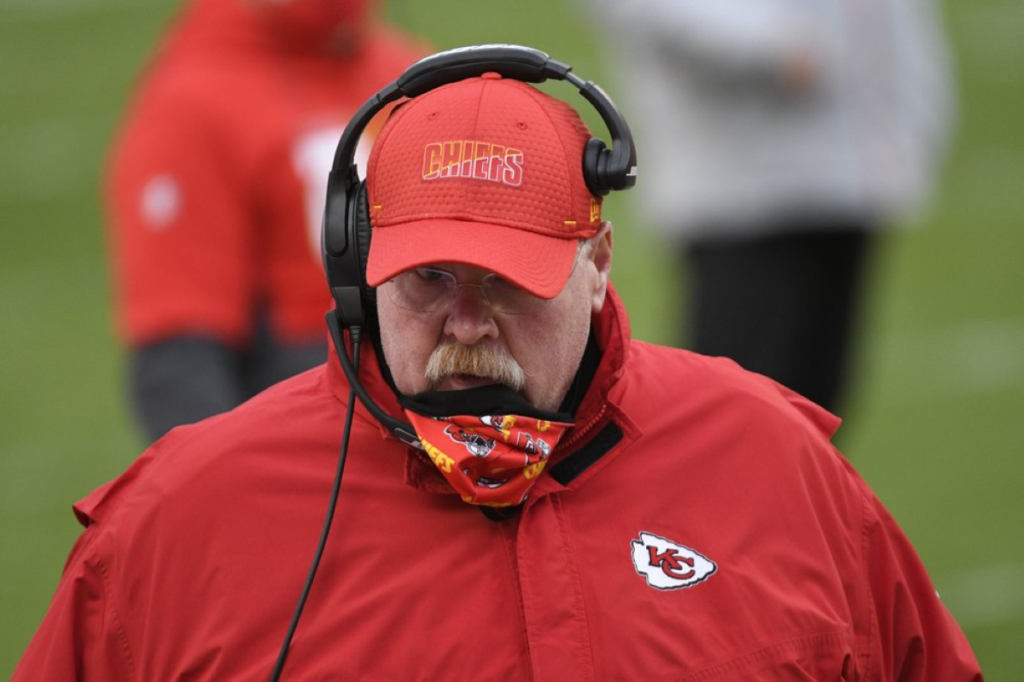By Josh Dubow
Fourth downs in the NFL used to be reserved for kicks, except in the most dire of circumstances.
But with teams scoring at a record pace and becoming more analytics friendly each year, teams are going for it on fourth down these days in scenarios that would have been unfathomable just a decade ago.
Whether it was Kansas City’s decision to go for it on fourth-and-1 in its own territory to seal a win last week against Cleveland, or Indianapolis’ failed fourth-and-goal try from the 4 late in the first half the previous week, those decisions have taken center stage this postseason.
“You can make a very good decision and have a bad result and you can make a bad decision and have a good result,” said Frank Frigo, the co-founder of EdjSports, a data company that has created its own customizable model for decision making in the NFL. “That’s OK. That’s life. But you have to operate on the best available information. In the long haul, you will do much better making sound analytically based choices.”
The data behind those decisions is more readily available than ever to fans with places like EdjSports and ESPN tweeting out the numbers that show which decisions are best and worst during games each week.
Here’s a deeper look into the in-game decisions coaches make and what the numbers say about them.
HOW FIGURE OUT
There are several models for decision making and they typically agree on most calls, although there are slight differences. EdjSports models the win probability for teams based on the decisions they make based on historical play-by-play data and adjusts it for variables like the strength and weaknesses of both teams from Football Outsiders, injuries and other factors. Calls that increase win probability are good and those that decrease it are bad.
WHY IS IT BENEFICIAL TO GO FOR IT
The models are more aggressive than almost any coach, advocating going for it on almost fourth-and-1 no matter the field position, favoring more fourth-down tries over field goals in the red zone and even advocating for “riskier” calls like saying the Browns should have gone for it last week on fourth-and-9 from their 32 with more than four minutes left when trailing Kansas City by five. That decision cost Cleveland 5 percentage points in EdjSports’ win probability. The Browns punted and never got the ball back.
“You’re voluntarily turning the ball over,” Frigo said. “You’re essentially trading it for field position. The model is very good at determining what the field position is worth compared to giving the ball up.”
Cleveland Browns HC Kevin Stefanski, talks with Kansas City Chiefs HC Andy Reid after division round game, Jan. 17, 2021, in Kansas City. Photo: AP Photo/Charlie Riedel
WHAT WAS THE BEST DECISION OF POSTSEASON
The best fourth-down call, according to EdjSports, came from Browns coach Kevin Stefanski, who went for it on fourth-and-1 from his own 29 with Cleveland trailing by five with about six minutes remaining. The call increased Cleveland’s win probability by 7.3 percentage points. Baker Mayfield converted it with a sneak, but Stefanski squandered it when he punted on fourth-and-9 on the next series of downs.
Chiefs coach Andy Reid’s call to go for it on fourth-and-1 on the next possession to seal the win was the second-best call of the postseason, increasing Kansas City’s win probability by 6.5 percentage points.
WHAT WAS THE WORST DECISION OF POSTSEASON
There’s little surprise on this one. The analytics didn’t like Tennessee coach Mike Vrabel’s call to punt on fourth-and-2 from the Baltimore 40 in the wild-card round when trailing 17-13 with about 10 minutes left. That decision cost the Titans 13.7 percentage points in win probability. The Ravens took the punt and drove for a field goal, and Ryan Tannehill threw an interception on the next possession to seal the game.
WHEN SHOULD YOU GO FOR 2
While fourth-down decisions have more impact, the decision on whether to go for a 2-point conversion after a touchdown can be difficult. Some choices are easy, like when a team scores a TD late in regulation and needs a 2-point conversion to tie the game or increase a lead from one to three points for example.
Others are more complicated with one that causes controversy being what to do when a team trailing by 14 points scores a TD. Conventional wisdom has always been to kick the extra point to make it a seven-point game. But the analytics point to going for 2, which some teams now do in that situation, because making it gives a chance to win in regulation with a kick and missing leaves open the option to tie with a 2-point conversion. The difference is only a percentage point or two in win probability, according to Frigo.
“The 2-point conversion decisions are interesting and certainly matter,” Frigo said. “But the more complicated ones tend to not have a huge amount of equity in the balance.”
HOW DO THE FOUR CHAMPIONSHIP GAME COACHES FARE
Three of the four coaches this weekend rank in the top 10 in EdjSports’ Critical Call Index, which grades the decision making during the season. Green Bay’s Matt LaFleur is third, followed by Reid (sixth), Buffalo’s Sean McDermott (eighth) and Tampa Bay’s Bruce Arians (30th).
___

